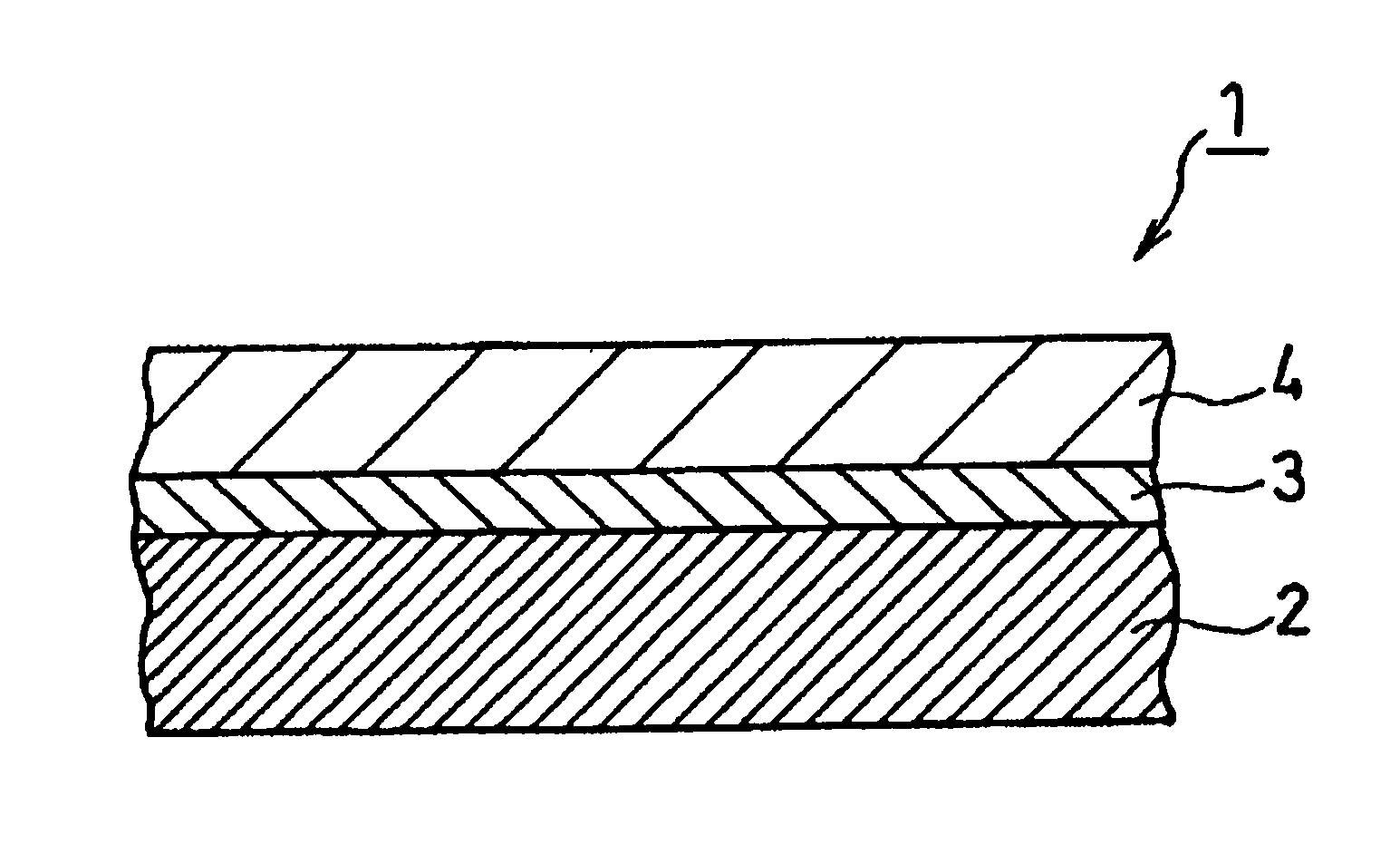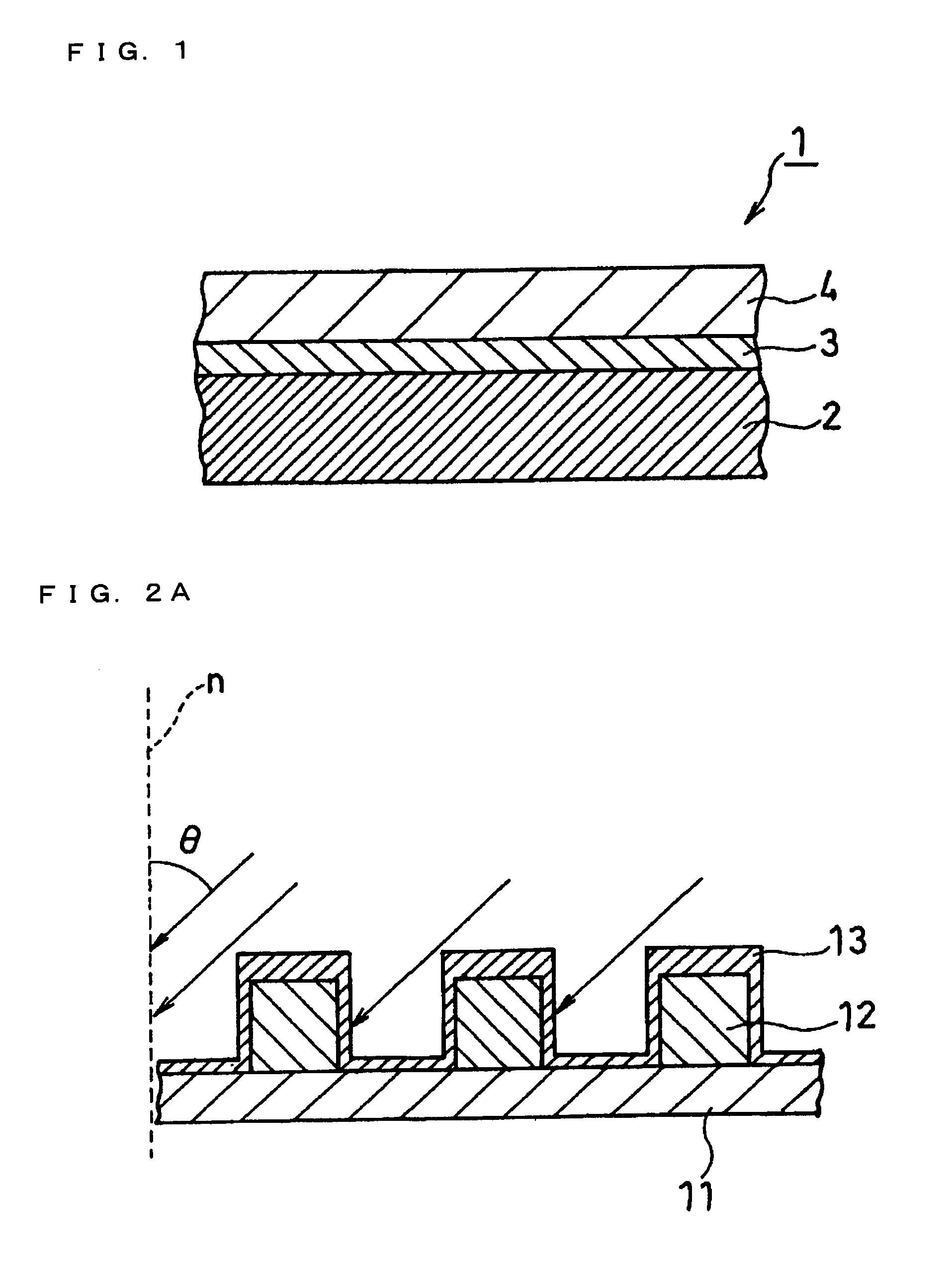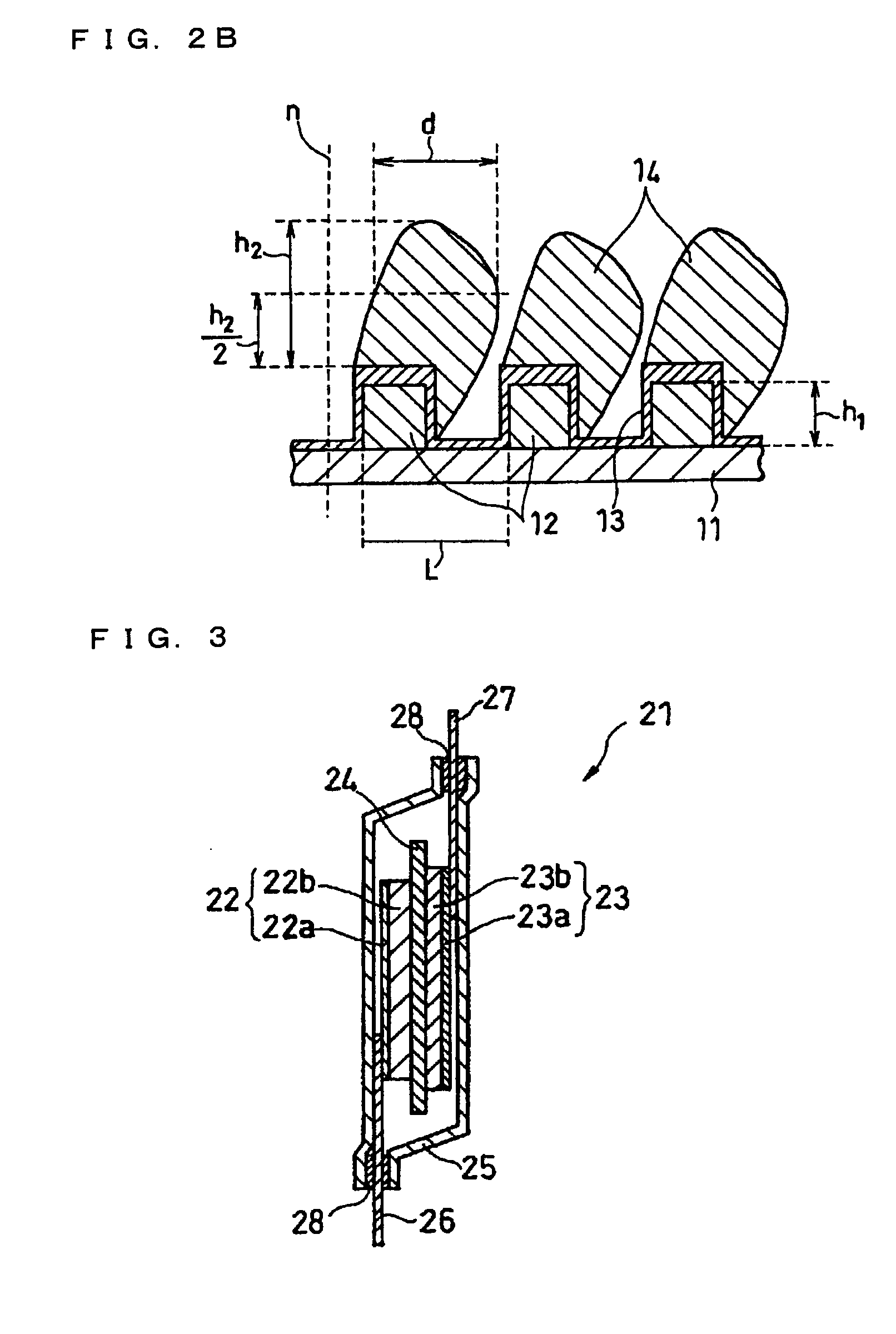Electrode for electrochemical device
a technology of electrochemical devices and electrodes, applied in the field of electrodes, can solve problems such as separation of active materials, and achieve the effects of suppressing the diffusion of components, suppressing the deformation of electrode plates, and suppressing the separation of active materials
- Summary
- Abstract
- Description
- Claims
- Application Information
AI Technical Summary
Benefits of technology
Problems solved by technology
Method used
Image
Examples
example 1
[0098]Referring to FIGS. 2A and 2B, a current collector 11 having regularly arranged protrusions 12 on its surface was produced first. In producing the current collector 11, a negative photoresist was applied onto a rolled copper foil of 18 μm in thickness, and the resist film on the copper foil was exposed to light and developed through a negative mask having rhombus patterns. On the grooves thus formed, copper particles were deposited by electrolysis. Thereafter, the resist was removed, and the protrusions 12 each having a rhombus shape in a plan view were formed. The protrusions 12 were formed such that the protrusion height h1 was 10 μm, the lengths of the long diagonal and the short diagonal of the rhombus portion on the top surface were 28 μm and 12 μm, respectively. The ten-point average height (R2) of the protrusions 12 measured at the top surface was 0.9 μm.
[0099]On the surface of the current collector 11 thus obtained, a thin layer 13 composed of titanium was formed by spu...
example 2
[0107]A copper foil having protrusions 12 formed in the same manner as in Example 1 was used as the current collector 11, and on the surface of the current collector 11, a 0.1-μm-thick thin layer 13 composed of titanium was formed.
[0108]In forming an active material layer, first, an active material was vapor deposited on the surface of the thin layer 13 on the protrusions 12. At this time, the height h1 of the columns was adjusted to 3 μm. Thereafter, the support table 43 was slanted in the opposite direction to a position where the angle of slant θ was −60°, and vapor deposition of active material was performed under the same conditions as in Example 1, to grow columns 14. The height h1 of the columns additionally formed was adjusted to 3 μm. Such processes were repeated alternately to perform vapor deposition seven times in total, whereby columns 14 each having six bents were formed.
[0109]In the negative electrode thus obtained (Sample 4), the height h1 of the columns 14 was 21 μm...
PUM
| Property | Measurement | Unit |
|---|---|---|
| first ionization energies | aaaaa | aaaaa |
| first ionization energies | aaaaa | aaaaa |
| thickness | aaaaa | aaaaa |
Abstract
Description
Claims
Application Information
 Login to View More
Login to View More - R&D
- Intellectual Property
- Life Sciences
- Materials
- Tech Scout
- Unparalleled Data Quality
- Higher Quality Content
- 60% Fewer Hallucinations
Browse by: Latest US Patents, China's latest patents, Technical Efficacy Thesaurus, Application Domain, Technology Topic, Popular Technical Reports.
© 2025 PatSnap. All rights reserved.Legal|Privacy policy|Modern Slavery Act Transparency Statement|Sitemap|About US| Contact US: help@patsnap.com



